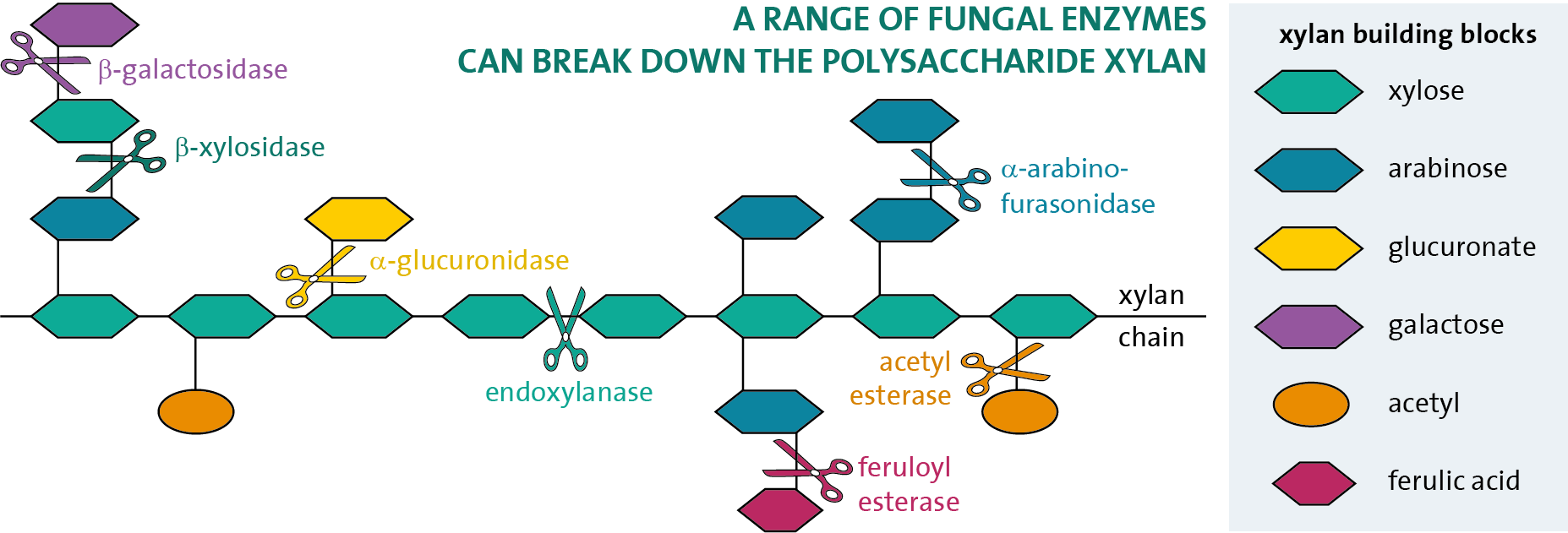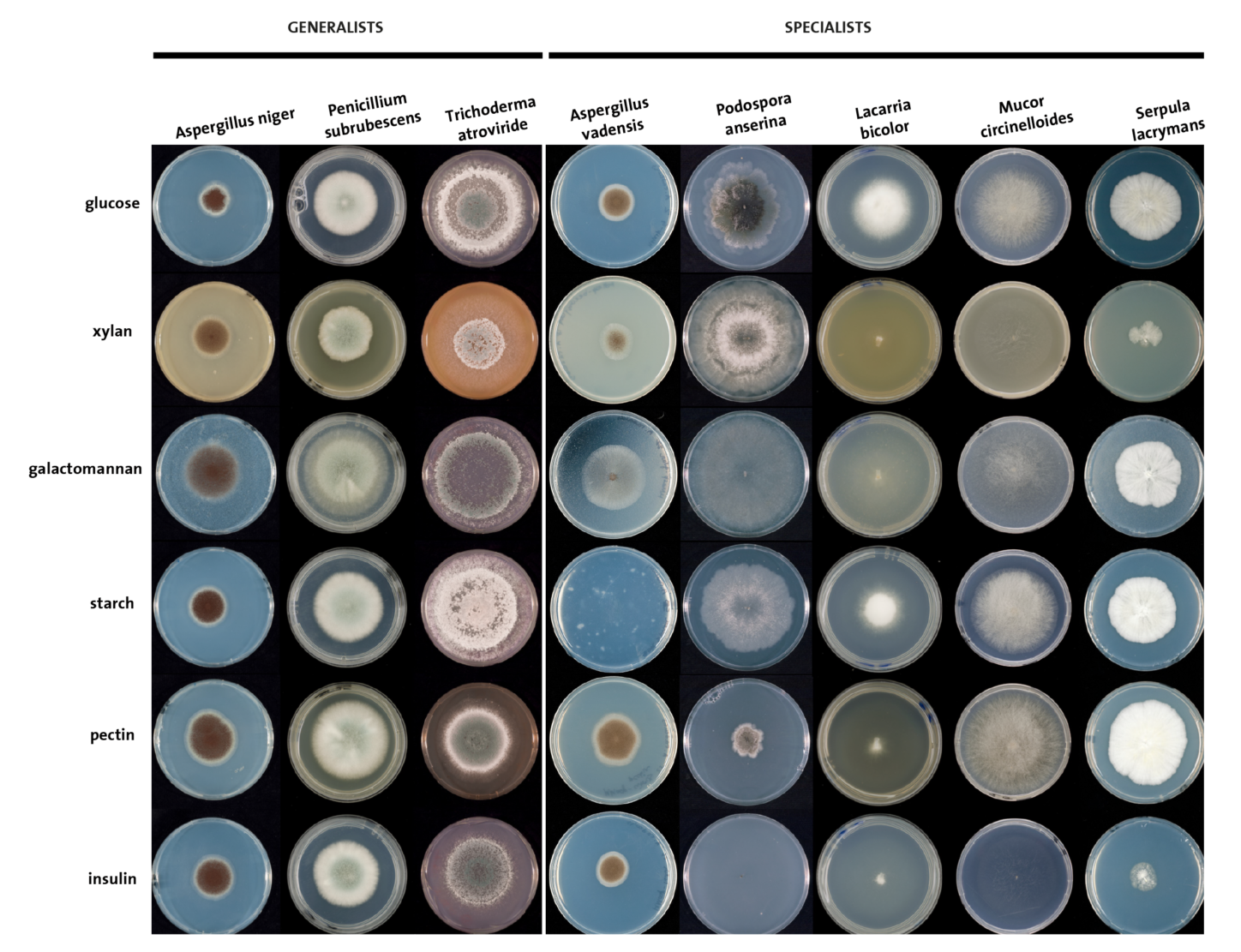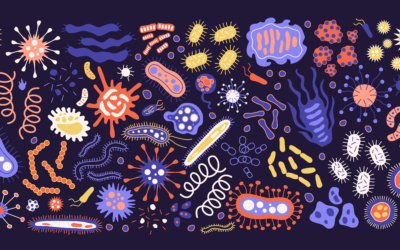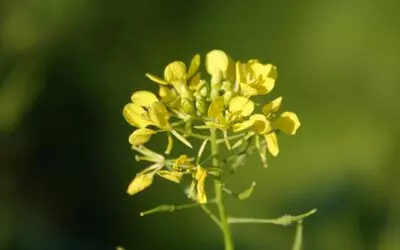
Why a fungus does not need to be choosy
De auteursFungi can easily switch their food source. Both generalists and specialists can deploy a broad range of enzymes to break down organic material. That makes them flexible and resilient.
Fungi are found throughout nature. They play an important role in the carbon cycle because they break down organic material and make it available again for other organisms. Nature has a wide variety of organic material, which mainly comes from plants. These are therefore the most important source of food for many fungi. Plant material varies enormously in composition and provides various nutritional components. Some species of fungi eat all of them, while others are more choosy.
Breaking down polymer bonds
Organic plant material mainly contains polymeric compounds, such as polysaccharides (long chains of simple sugars, such as those of cellulose) and the aromatic polymer lignin, which is found in wood. Polymers are made up of a large number of (different ) building blocks that can be linked together by various bonds. As fungi cannot take up polymers into their cells, they secrete enzymes to convert the polymers into smaller compounds outside the cell. These enzymes are highly specific and can usually only break down one type of bond between specific building blocks. Because of this, fungi produce a wide range of enzymes, which together can break down all bonds in the polymers.
160 to 400 genes
Now that the genome sequence of various fungi has become known, our understanding of the variation in enzymes produced by fungi has increased significantly. It has become apparent that most fungi that can break down plant material have between 160 and 400 genes that code for enzymes involved in this process. And possibly more important still: fungi exhibit large differences in the composition of these enzyme sets. That elicits a number of questions, such as: why do some fungi produce more enzymes than others? Is there a direct relationship between the number and type of enzymes we encounter in a fungal genome and the compounds that this species can or cannot break down? Does this mean that a fungus with more enzymes can also access more types of food and is therefore more resilient?
A large number of researchers have now studied these questions. This research showed that there is indeed a relationship between the type of enzymes encoded in the fungal genome and the degree to which a substrate can be broken down. For example, a fungus with many genes for cellulose-degrading enzymes can grow well on cellulose, and a fungus with many pectin-degrading enzymes can grow well on pectin. This seems to suggest that fungi are choosy. However, their preferences are not that specific. Most species can break down several types of polymer and some species can break down almost all polymers. They can therefore use different sources of food and that makes fungi resilient.

An example is the enzymatic breakdown of a polysaccharide (xylan). The enzymes, here symbolically represented as scissors, are specific for one type of bond.
Generalist versus specialist
The studies revealed that fungi can be classified into generalists and specialists. The generalist fungi contain a wide range of enzymes suitable for each type of polymer that the fungus encounters in nature. However, they only have one or a few of each type of enzyme. Conversely, the specialist fungi have a clear preference for one or two plant polymers, and possess a large number of enzymes to break down those specific polymers. The number of enzymes for other polymers is often far lower or even absent in the specialists. They concentrate all of their energy on a limited number of substrates.
It can therefore be concluded that generalist fungi are more resilient than specialist fungi, as they can more easily adapt to the available substrates. So, it is hardly surprising that the generalist fungi predominantly occur in more biotypes than the specialists: both on plants and in the soil, for example. Nevertheless, the specialists also have a certain degree of resilience: most of them are capable of breaking down two to three polymers well, as a result of which they still have several sources of food they can choose from. In addition, they often have a limited set of enzymes for the breakdown of other polymers so that they obtain just enough energy from these to survive if their preferred polymers are not available.
The right enzymes for each substrate
However, the fact that the genetic material contains genes for certain enzymes does not automatically mean that the right enzymes are also produced at the right moment. The fungus has a regulatory system that detects which polymer is present and subsequently produces those enzymes that can break it down. This regulatory system is a crucial part of the resilience of fungi. After all, if the fungus were to continuously produce all of the enzymes, then it would waste a large part of its energy on enzymes that are not needed at that point in time. Instead, fungi only invest energy in the production of those enzymes that can actually break down the available polymer. A similar regulatory system is also found in other organisms. For instance, plants adapt their defences to the attackers present.

Comparison of the growth of a selection of fungi on different polysaccharides from plants. The generalists grow well on all polysaccharides, whereas the specialists are more choosy. © Ronald de Vries
Step-by-step inhibition
Over the past few years, we have gained a good idea of the resilience of fungi by studying what happens if, step-by-step, we inhibit the ability of the fungus to consume specific plant polysaccharides. We tested this in the fungus Aspergillus niger, which can break down all plant polysaccharides and is found in many biotopes. It is widely used in industry to produce enzymes for a wide range of biotechnological applications, such as bread improvers and bioethanol, and to produce citric acid for many different food products, from cakes and jam to soft drinks and sauces.
As previously stated, fungi use regulatory systems to ensure that the right enzymes are made to break down the polysaccharides present. That system is made up of different regulators, each of which activates its own set of genes. Removing the gene encoding one such regulator therefore blocks the breakdown of the related polysaccharide and forces the fungus to use other polysaccharides (if present) as a source of food.
In this study, we removed several regulatory genes one by one, as a result of which the fungus could gradually use fewer polysaccharides to feed on. We let these mutant fungi grow on wheat bran, which consists of three polysaccharides (cellulose, xylan and starch) as well as protein. First, we blocked the use of cellulose and xylan, and the fungus managed to grow well despite this. Once we also blocked the use of starch, the strain grew less well, but it did not die. That was because the fungus started to use the protein present as a source of food. In this manner, our study demonstrated that the fungus is capable of switching to a different source of food if the use of the preferred source is blocked.
Flexibility
This flexibility is a vital part of the survival strategy of fungi in their natural environment. After all, the available source of food can vary considerably, and there is also stiff competition with other fungi and bacteria. We can make use of this flexibility in biotechnological applications, for example by using several waste streams from agriculture or food processing as a substrate. Fungi can then convert these into the desired products, such as bioethanol, building blocks for bioplastics or citric acid. In this way, knowledge about the resilience of fungi also contributes to a green economy.







